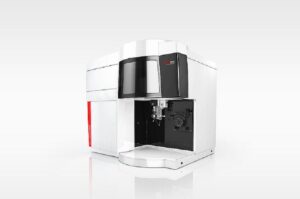
In the radically versatile spectrum of trace element analysis, ICP OES Principle is used tremendously. The analytical process provides a rapid, robust multi-element analysis of solutions and digested solids. The peaks at characteristic wavelengths or the element lines result from the bound outer shell electron transitions from the excited to the lower energy level. In the ICP OES Principle, detection limits are a part per billion or below for numerous elements.
Elemental analysis overview
The elements that emit bright light like Mg, Be, Ca, Ba, and Se have detection limits of tens of parts per trillion or below. To further improve the detection limits by 10 times a desolations system following a heated spray chamber or ultrasonic nebulizer is used. The analysis technique can work with samples of low detection limits, limited spectral interferences, multiple elements, low matrix effects, and good stability.
Once the samples are prepared and the instrument is calibrated, the analysis time per sample will be less than 1 minute. However, there are some massive challenges to the ICP-OES, and one of them is ICP-MS that has lower detection limits up to 1000x detection limits. But ICP MS is relatively more expensive and it is limited to samples with 10x lower total dissolved solids.
ICP-OES Limitations
There are certainly some limitations to the ICP-OES principle. Some of these include the continuum background emission, spectral overlaps, higher detection limits than ICP-MS, and the matrix effects.
The continuum background emission involved unbound electron transitions or the ion-electron recombination of Bremsstrahlung and it occurs at all wavelengths. The sensitivity and the background fluctuations determine detection limits average near wick are the background emission intensity, sample dependent, and the net line intensity.
Must Read: Component Analysis Using Absorption Spectroscopy
In terms of matrix effect, the elements in the sample at high concentrations can affect sensitivity. The excitation and ionization in the ICP are fundamentally a result of collisions between the ions or atoms and fast-moving electrons. Thus, when the components in the sample cause a change in the temperature or concentration in the plasma, the sensitivity can also change.
Developments in ICP OES over the past three decades
- One of the most significant advances in the use of solid-state imaging detector with a typical echelle spectrometer.
- The detection limits have also improved by approximately 10 times as a result of a combination of factors.
- Also, the solid-state generators have replaced vacuum tube generators with an amplifier.
- The size, as well as the cost of the ICP OES instrument, has also decreased.
- Sample introduction systems equipped with faster washout times now can provide sample measurement in less than a minute.
Cessation
In conclusion, the elemental analysis needs of different procedures can be best met by a midrange analyzer using the ICP OES principle. The technology is capable of reliable performance and it has a wide range of applications ranging from environmental and agronomy to pharmaceutical, consumer product safety, and food. The advances are steady in the field of trace element analysis, but they are expected to take a radical turnover. So, let’s hope for the best!